1
HOME > Tips & Advice >
BLAZER VS. SPORT COAT VS. SUIT JACKET: WHAT’S THE DIFFERENCE?
Written by Ivan Yaskey in Tips & Advice on the 6th November 2023
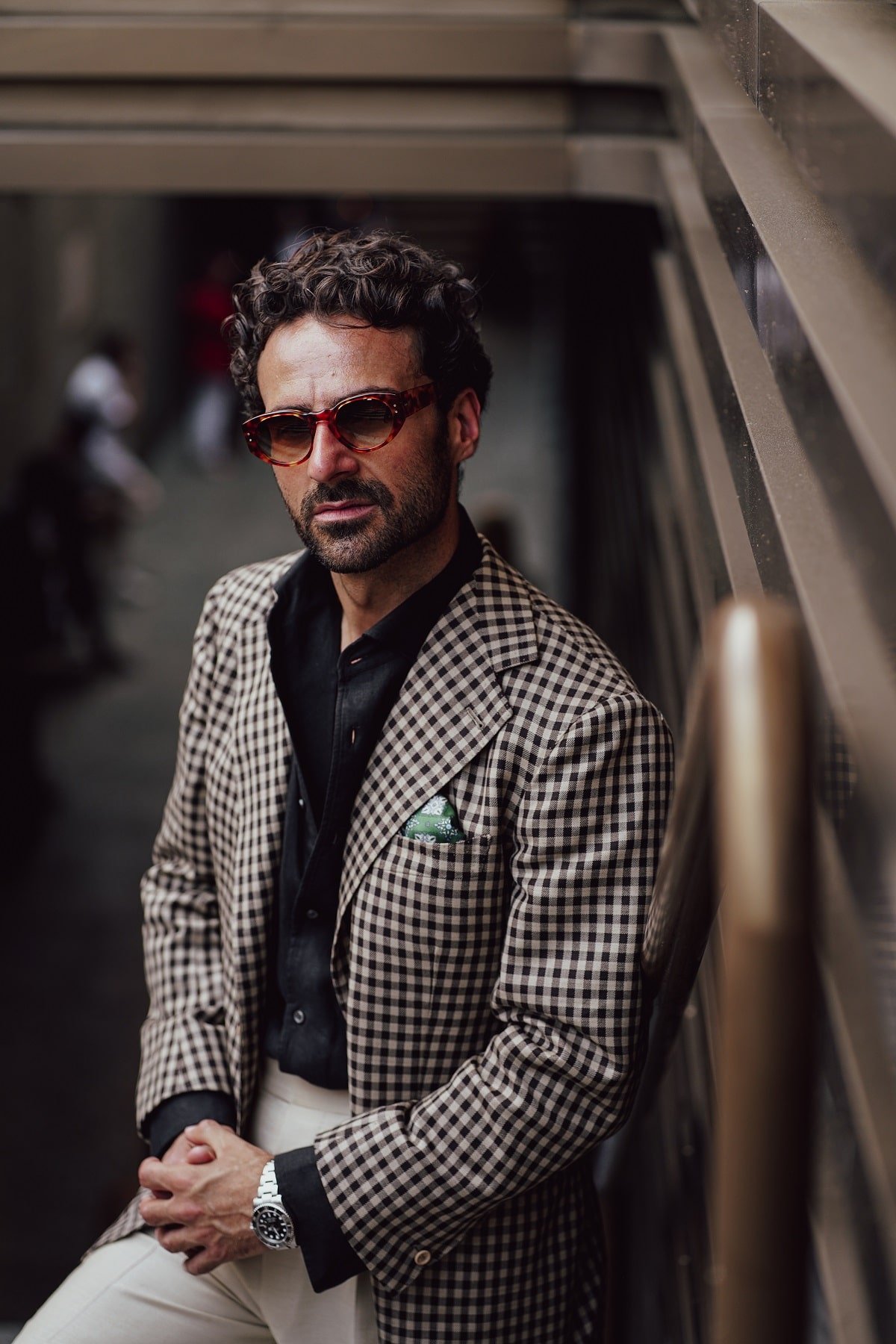
A blazer pulls even the most mundane outfits together, making jeans and a polo seem like you’re going somewhere. Yet, “blazer” has transformed into casual menswear-speak for any type of jacket with peak or notch lapels that’s not a bomber, chore coat, or something made of denim. At least in terms of construction, this loose template encompasses three distinct jackets: the blazer, with nautical origins; the sport coat, the most casual of the three and frequently called an “unstructured blazer;” and the suit jacket, with a name clearly explaining its origins. Today, dress codes feel like loose maybe-we’ll-follow rules, where you could grab a navy suit or simply pair a navy blazer with gray chinos and no one else would care or know the difference. Etiquette and social rules have fallen partially out the window, but especially for events where what you wear matters – think job interviews, showing up to a wedding – understanding the differences between these three garments somewhat matters. If you’re unsure, consider the following:
What is a Sport Coat?
Yes, it has lapels, a button front, and a straight hem, but the sport coat stands out as the least formal of all three due to its background: It was conceived as a hunting and sporting jacket, hence the name. But, monikers aside, these origins shape its construction: It’s a slightly more spacious jacket that used to be constructed with a heavier outdoor fabric, like tweed or houndstooth, to brave the cooler weather. Once also called a morning jacket, the sport coat started as a garment of the English aristocracy, worn as they headed outdoors to hunt or fish. The construction reflected that of a suit but featured thicker, warmer fabric, and, at a time, frequently sported a leather patch on the shoulder for supporting a rifle. Many further included a belted waist with a buckle, perhaps alluding to the adventure-minded design of the safari jacket, but these features disappeared into the 20th century. Its aristocratic origins painted the sport coat early on as a luxury item: You didn’t really need it to go out to hunt or fish, but those that could afford it and who engaged in these pursuits wore it. Later, more affordable and mass-produced clothing made the garment more accessible, but by that point, the sport coat wasn’t used for hunting or other outdoor activities: Rather, wearers donned it for the style, pairing it with trousers of a different color and a tie.
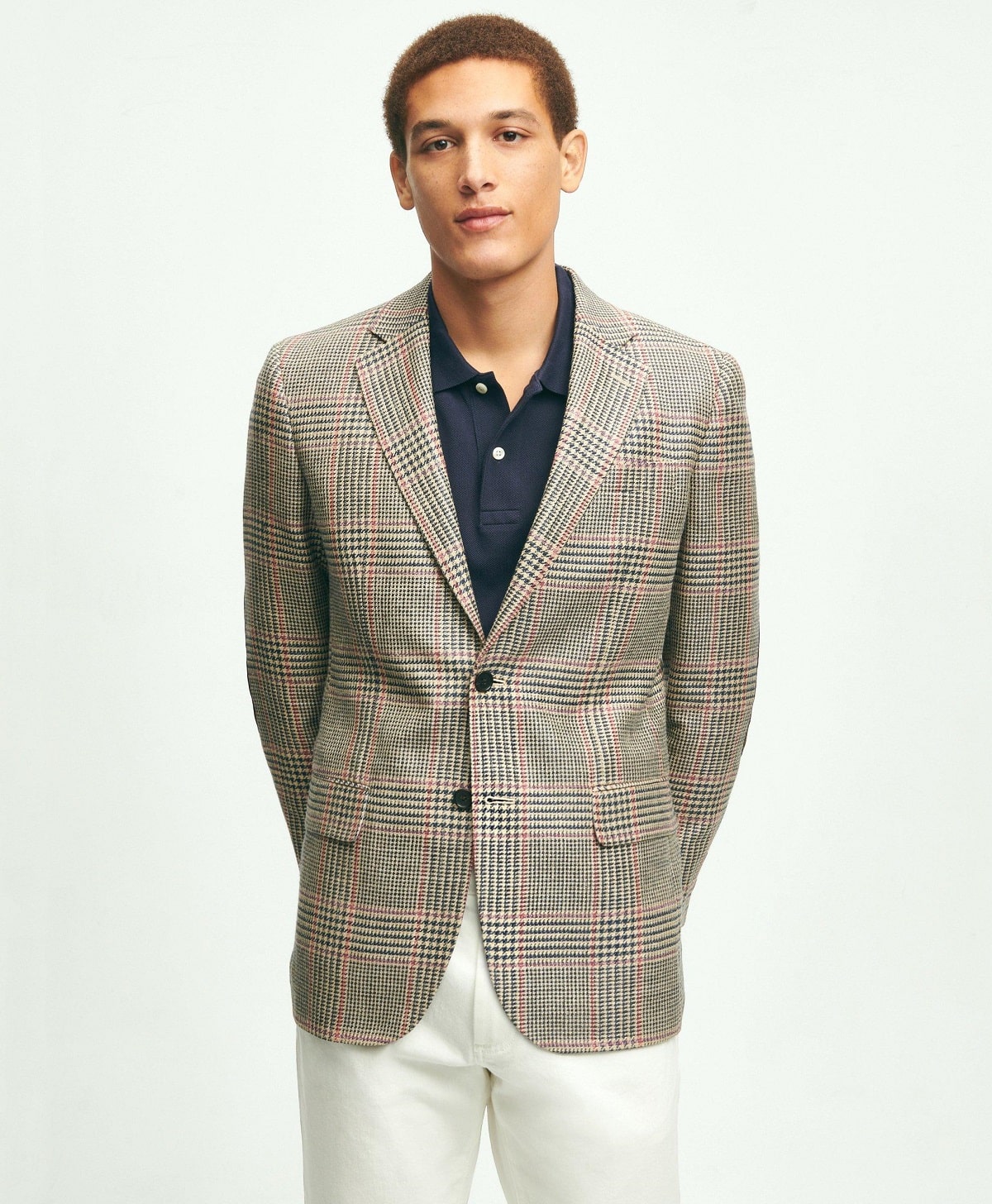
Today, this framework influences our perspective of what a sport coat is and when it’s worn:
- It’s made of a heavier fabric than a typical blazer, constructed with wool, flannel, herringbone, tweed, cashmere, or even a coarser linen.
- Because the wearer had to be able to move to shoot and pursue small game and often wore a sweater underneath, the sport coat featured – and continues to have – a looser cut, complete with pleats and a slit along the back.
- Many of the base rules for suits and blazers don’t apply, and as a result, no color or pattern limitations confine sport coats. In turn, you’ll regularly see checks, stripes, and houndstooth patterns and a wide range of colors.
- The buttons aren’t meant to stand out, and often have a smaller size and cheaper construction than those on a blazer or suit jacket.
- In addition to the shoulder, leather patches were often added to protect the elbows.
- You won’t see double-breasted sport coats. Rather, the jacket is single-breasted with peak lapels, often with visible stitching, and two or three buttons. Some jackets may have flap or slip pockets on the front.
- Being the more casual of the three garments, the sport coat doesn’t look out of place with jeans, chinos, and trainers and, in fact, elevates them. However, avoid pairing them with suit or dress trousers, as the material’s weight is noticeably heavier and creates a disconnect.
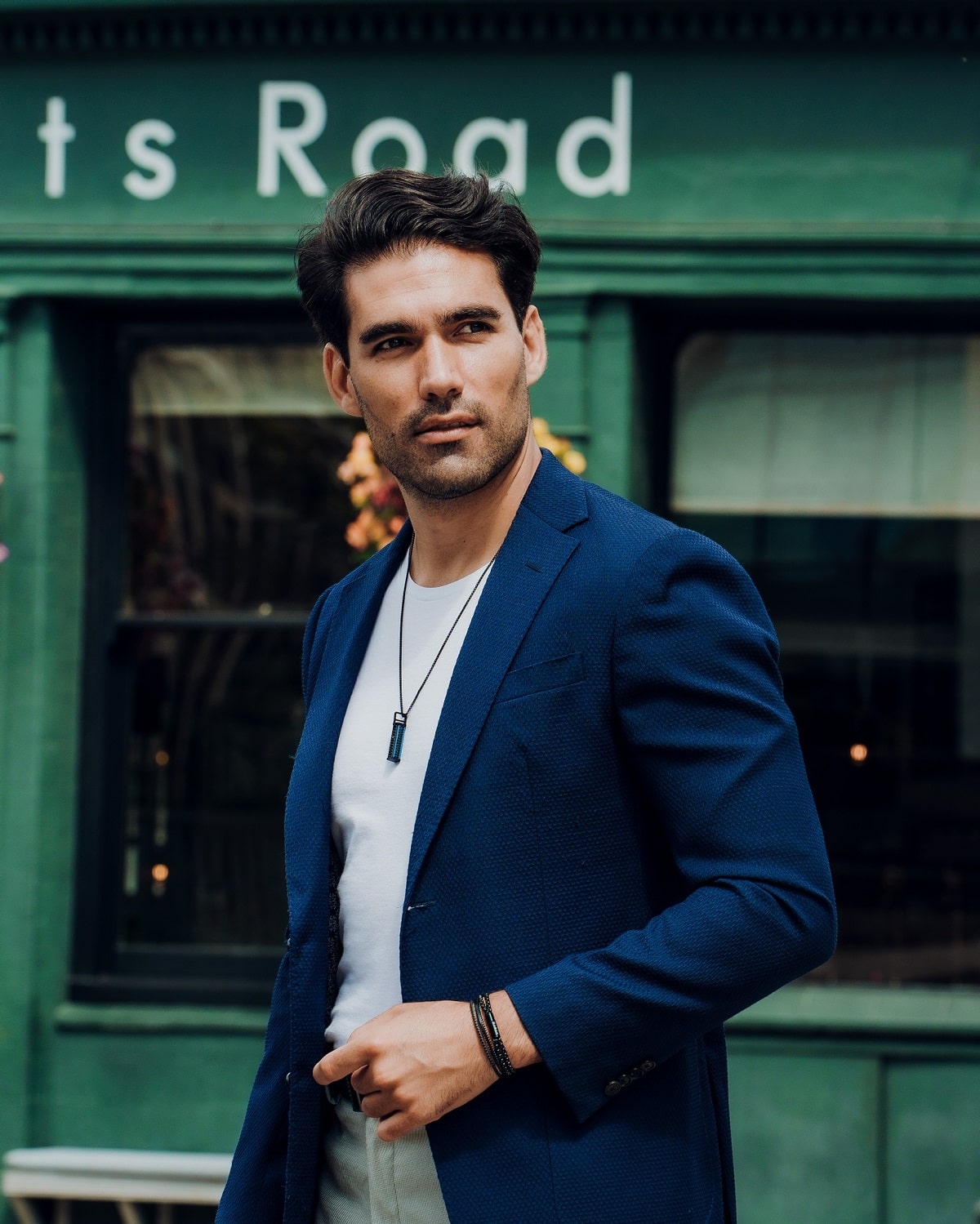
What is a Blazer?
These days, a blazer serves as a catch-all term for a dressy-casual to formal jacket with lapels and at least two buttons in front. The formal definition, however, is more specific: A blazer is a moderately formal double-breasted jacket made of navy blue wool – a nod to its 19th century Royal Navy origins and later adoption by Cambridge’s rowing team – and complemented with prominent gold or silver tone buttons. Beyond this description, today’s blazers serve as a lighter-weight, dressier garment sharing similar characteristics with a sport coat: The key differences here are weight – blazers use a lighter wool or even cotton or linen – and cut. For the latter, the sport coat affords more room, while the blazer sits closer to the skin: You can still move your arms, but this isn’t a garment you’ll put on for more active use. The buttons remain prominent – although toned down to pewter or charcoal – on a two- to six-button front. Too, the design has shown more variation over the years: Double-breasted tends to read as highly casual or extremely formal, while single breasted with a notch collar remains the most versatile. Peak lapels further signal a degree of authority, or at least some confidence.
In addition to these characteristics:
- The blazer typically has a more structured form, with angular, defined shoulders and sides, and a hint of a waist.
- Although navy remains a formal color, it’s not the only one you’ll spot. Charcoal, gray, and tan hold equal weight, and the garment regularly comes in “next level down” colors like blue, forest green, or burgundy, as well as in plaid and striped variations.
- Similar rules as sport coats apply: Pair your blazer with trousers of a different color but a similar weight material. Here, though, the lighter weight and slimmer cut better integrate with your suit separates.
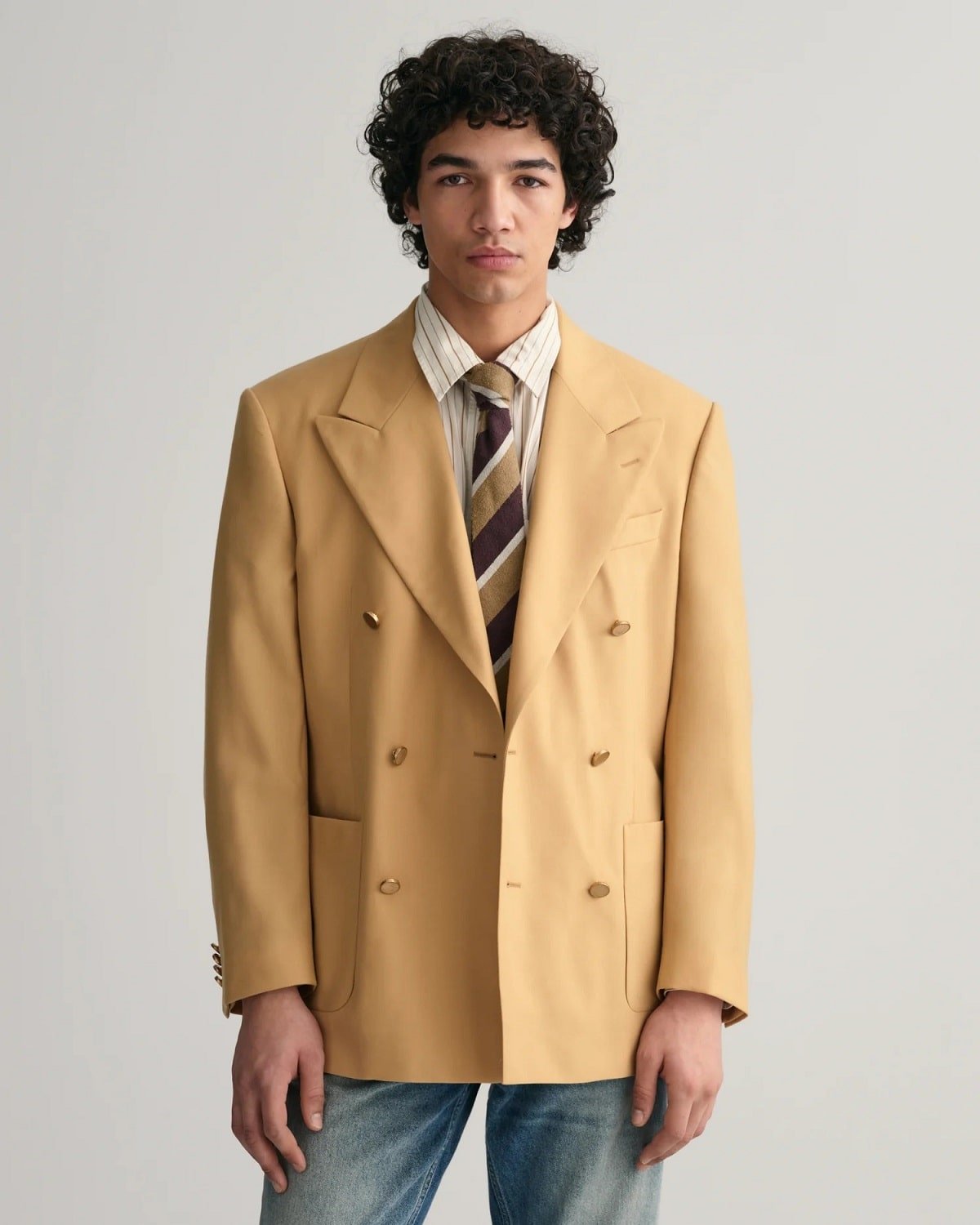
What is a Suit Jacket?
A suit jacket pretty much explains itself: It’s meant to be part of a pair with a matching set of trousers. Along with this general distinction, both garments use a finer, lighter material, like wool, cotton, or linen, and nearly always come in a traditional color, like navy, charcoal, or gray.
Along with these basic characteristics:
- Suit jackets typically have a smooth appearance, free of an obvious pattern or texture, although you may see some with checks or pinstripes.
- Most use worsted wool for three seasons of wear, although you may find cotton or linen for warmer weather. Three-season suits additionally include a lining.
- For formal situations, always default for your suit jacket, and make sure to wear it with the matching trousers.
- Similar to blazers, the suit jacket has two, three, or, in rare cases, six buttons, as well as a single- or double-breasted front and a choice of notch or peak lapels.
- Excluding suiting from the ‘90s and before, a suit jacket and matching trousers sit closer to the skin and are more form-fitting – although straining can indicate you’re wearing something too tight.
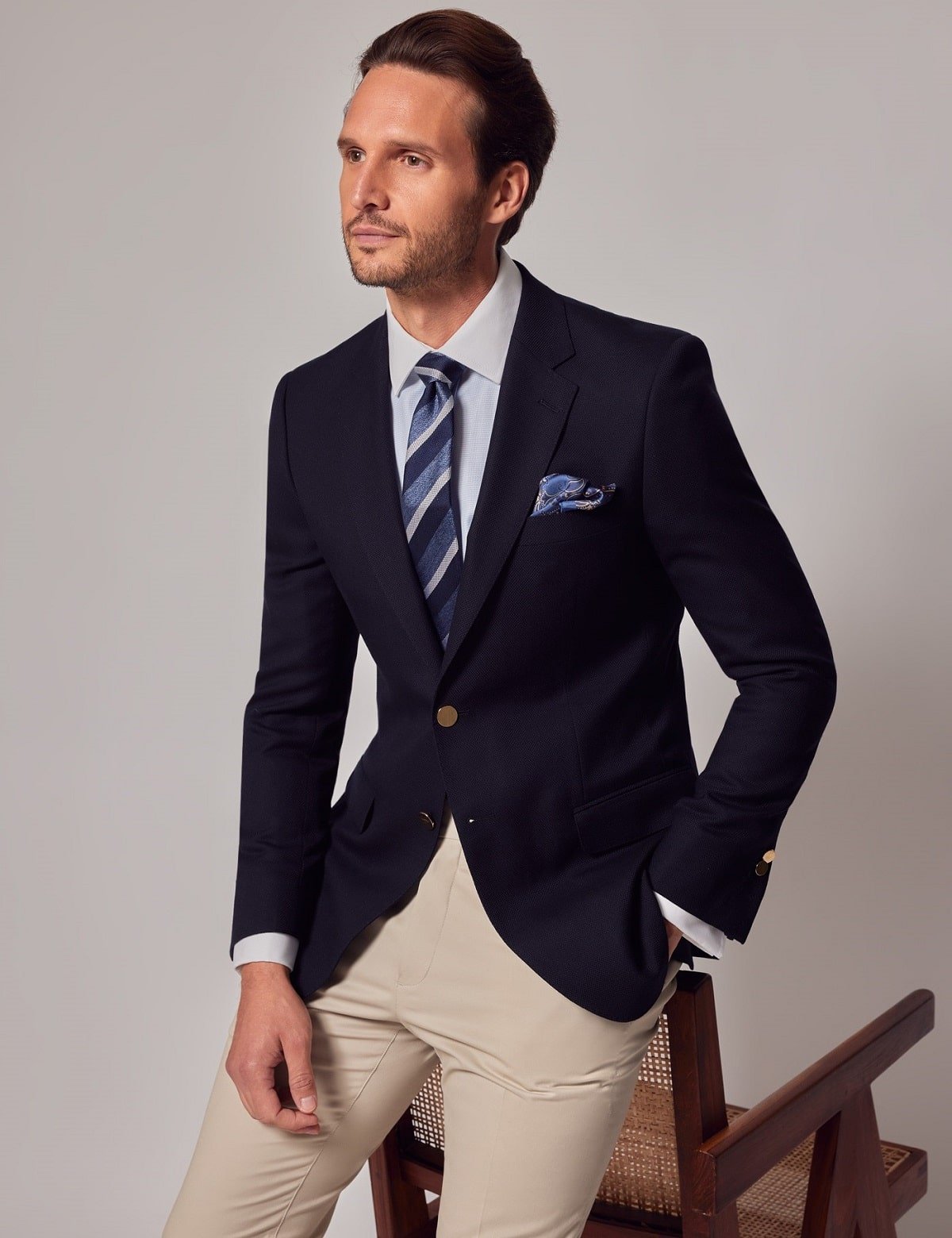

Trending
2
3
4
5
6
7
8
9
10










